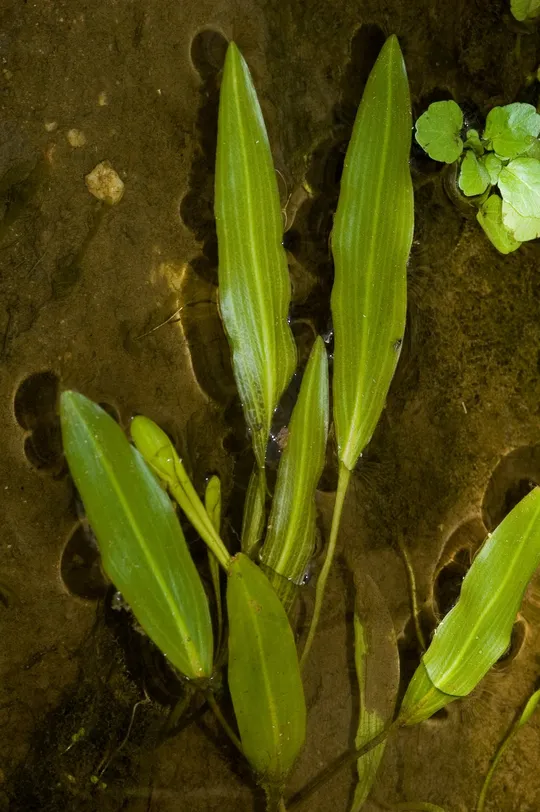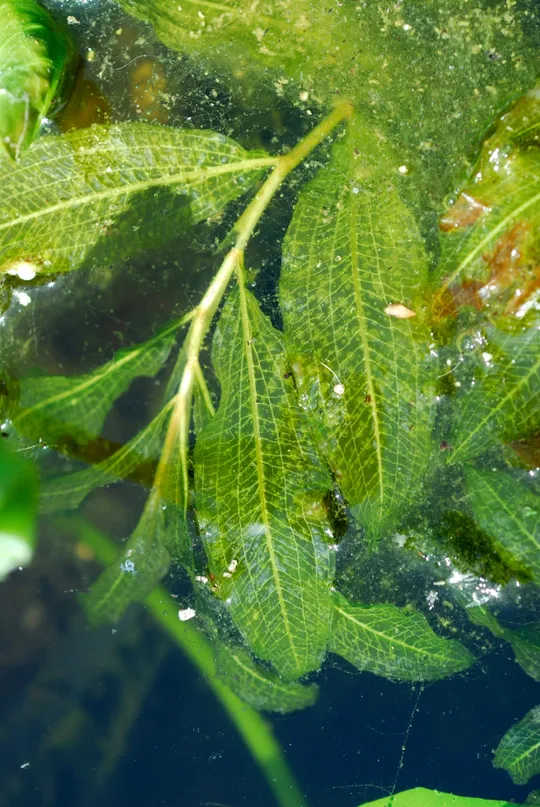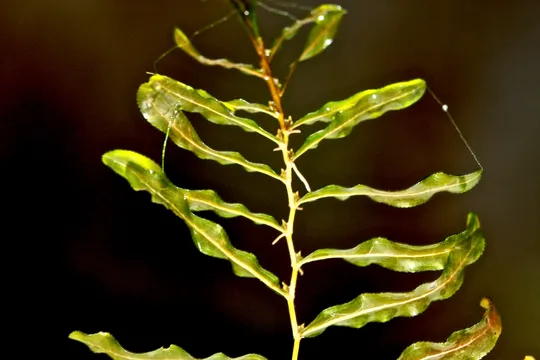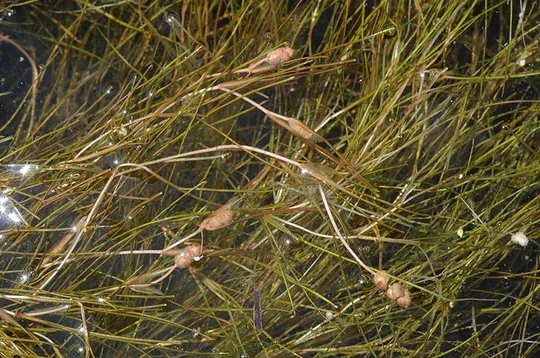Shining Pondweed
Potamogeton lucens


Potamogeton lucens now grows only
in the Sharon and the Golan Heights at a single site in each region. The
species may possibly be found at an additional site in Israel. P. lucens was considered extinct until Shir
Vered found it again some 15 years ago in the Sharon, in
the Menashe Sedimentation Reservoir. In 2009, thousands of plants were counted there
again. In the Sharon, it was collected between the 1920s and the 1960s at 3 more
sites: the Yarkon springs, Ya'ar Pond and Batih Pond, but is now extinct in all
of them. Danin (2004) noted it in the Golan Heights and it was and found in the
Nov stream near the Heital reservoir during a Rotem seminar in June 2010. P. lucens formerly grew in the Hula Valley as well, where it
was collected from two sites – the Hula Lake and north of the Hula, but it has
not been found there since. Plants originating in the Abu Kabir botanical
garden are grown today in the Israeli
plant garden at Netiv HaLamed-Heh and in the Hebrew University Botanical Garden
in Givat Ram.
Relatively deep
water in streams, ponds, lakes, canals and reservoirs. Potamogeton lucens favors
calcareous water.
See Potamogeton crispus.
·
The distribution of Potamogeton lucens
has decreased from three regions to two, and the number of
definite sites decreased to two as well.
·
The population of the Menashe Sedimentation Reservoir numbers thousands of plants while in the Golan
Heights the population is extremely small.
·
Wetland desiccation and pollution led
to the extinction of P.
lucens
from sites on which it had previously appeared. These factors also threaten the
populations at the sites where the species grows today.
·
P. lucens is not protected in nature reserves in
Israel.
·
The plant is extremely common in the
world and its IUCN category is Least Concern (LC).
The Potamogeton lucens populations at the Menashe Sedimentation Reservoir should be regularly
monitored. Attempts should
be made to naturalize the species in wetlands with suitable water quality and
to grow it in Botanical Gardens.
Potamogeton lucens has a broad
distribution in the temperate areas of Europe, Asia and North Africa.
Potamogeton
lucens
is a submersed aquatic plant currently known in Israel from only one site, which
was considered extinct until it was discovered on that same single site. The
number of sites has decreased significantly since the 20th century due to
wetland desiccation and water quality deterioration. P. lucens has a broad global distribution and
is not globally endangered.
ויזל, י. וליפשיץ, נ. 1979. צמחי מים בישראל. הוצאת רשות שמורות הטבע
Current Occupancy Map
| 1000 squre meter pixel | 5000 squre meter pixel | 10000 squre meter pixel | |
|---|---|---|---|
| number of observations | 0 | 0 | 0 |
| in total pixels | 0 | 0 | 0 |
| Family | Potamogetonaceae |
| Classification | On the endangered species list |
| Ecosystem | Mediterranean humid |
| Chorotype | Holartic |
| Conservation Site | Menashe Sedimentation Reservoir |
| Rarity |
1
6
6
|
|---|---|
| Vulnerability |
0
4
4
|
| Attractiveness |
0
0
4
|
| Endemism |
0
0
4
|
| Red number |
1
5.3
10
|
| Peripherality | 0 |
| IUCN category | DD EW EX LC CR EN VU NT |
| Threat Definition according to the red book | Critically endangered |
 Based on:
Based on:






